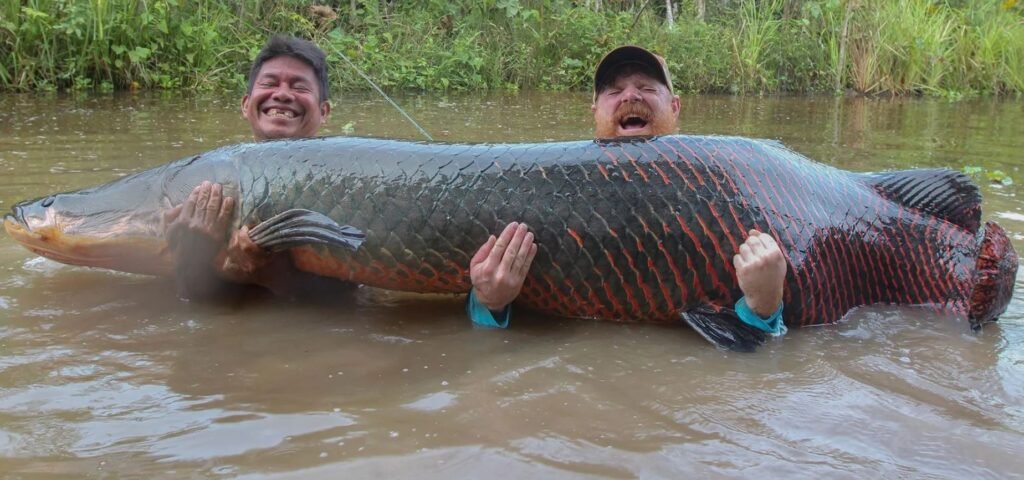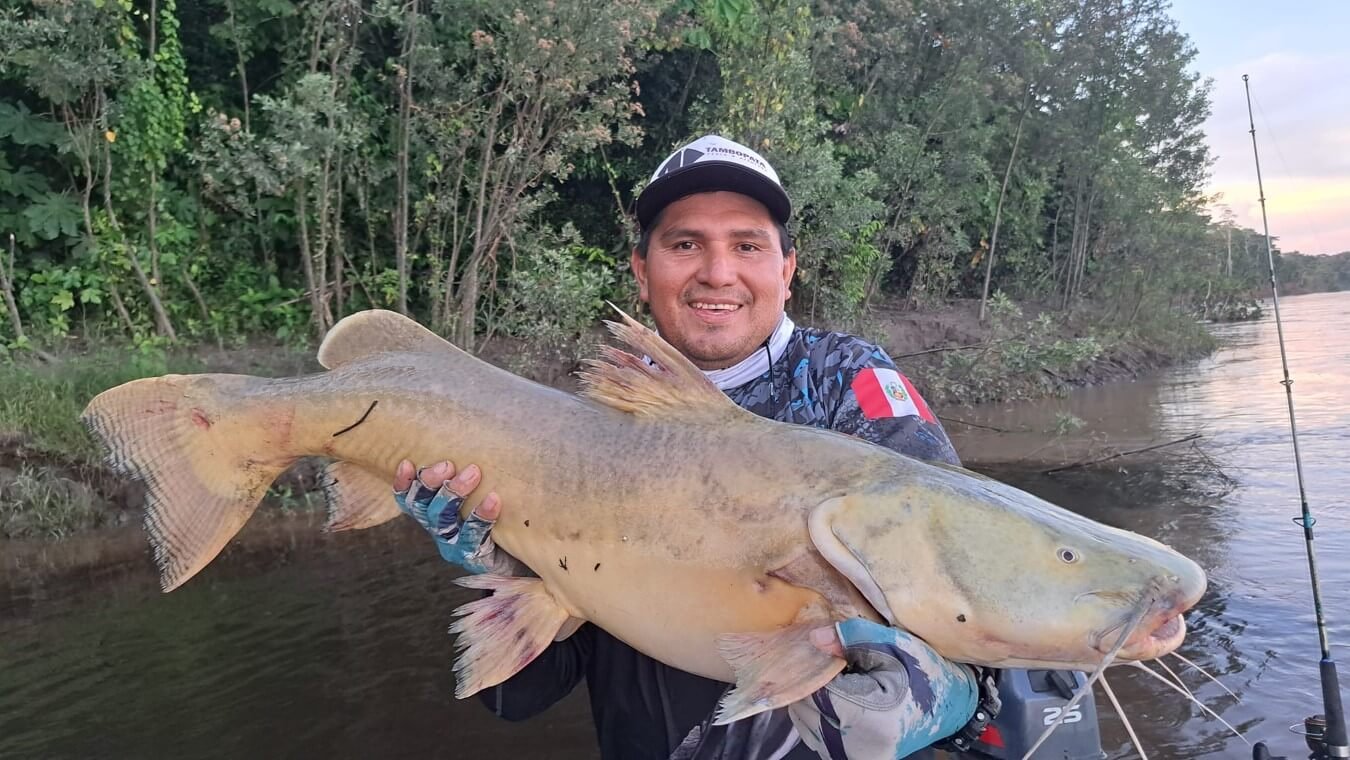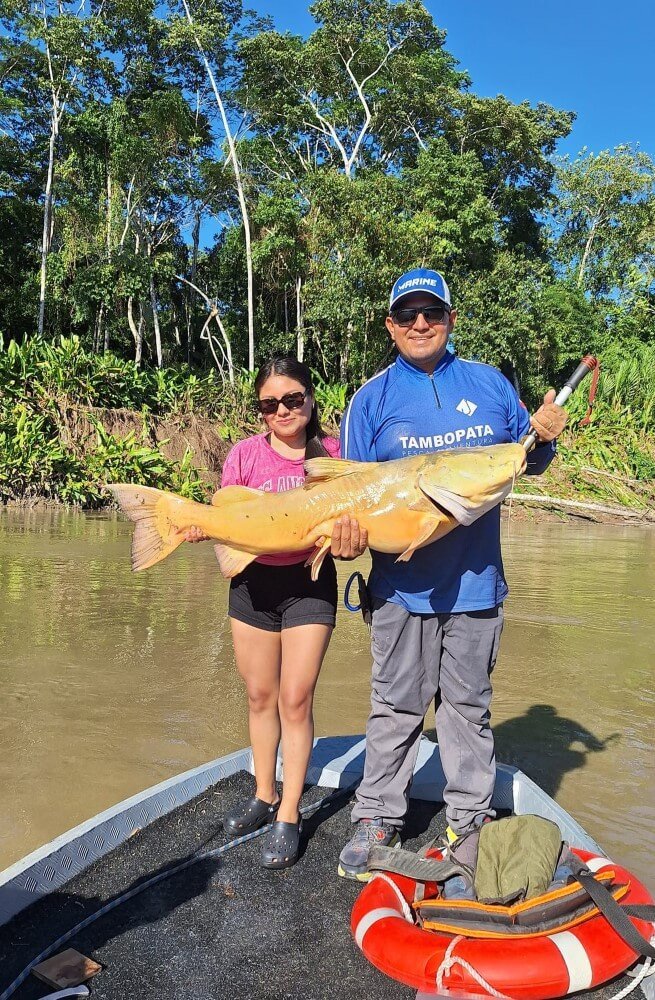The paiche (Arapaima gigas) in South America, also known as pirarucu in some regions, is one of the largest freshwater fish in the world. This giant of the Amazon rivers has a significant presence in several South American countries, where it plays an important role in both local communities and the ecology of the rivers.
In this blog, we will explore the presence of the paiche in South America and in each country, its unique characteristics, and the conservation strategies applied in each region.
The Paiche in Peru: The Jewel of the Peruvian Amazon
Peru is home to some of the most well-known populations of paiche. This giant fish is primarily found in the Amazon basin, specifically in the regions of Loreto and Ucayali. It is a key species in local culture and economy due to its meat, which is highly valued in both national and international markets.
- ✓ Habitat: Rivers, lakes, and lagoons of the Peruvian Amazon.
- ✓ Economic Importance: Paiche is a key product in the fishing industry and export trade.
- ✓ Conservation: Regulations exist for sustainable capture, though overfishing and illegal hunting remain an issue.
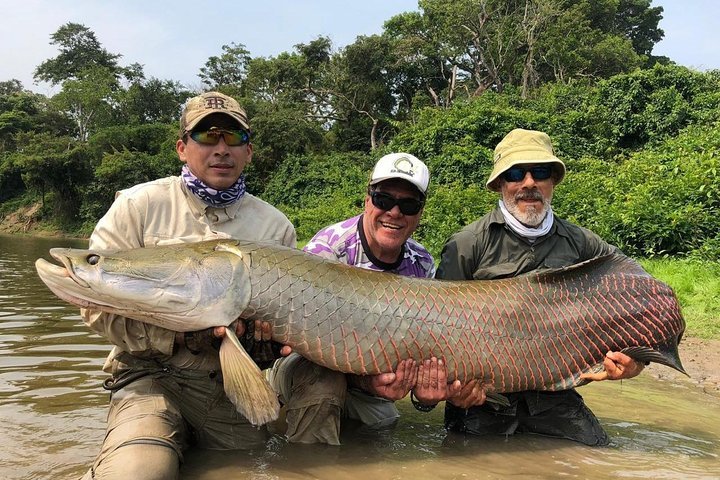
Join us on a journey through Peru to explore the sport fishing of paiche, the Jewel of the Peruvian Amazon. → Click Here.
The Paiche in Brazil: The Pirarucu of the Amazon
In Brazil, the paiche is known as pirarucu. The Amazon River and its tributaries are home to this majestic fish, which has been part of the local diet and economy for centuries. Brazil is one of the main countries exploiting paiche both commercially and for sport fishing.
- ✓ Habitat: Amazon basin, including the state of Amazonas.
- ✓ Cultural Importance: In many indigenous communities, the pirarucu is part of their identity and traditions.
- ✓ Conservation: Protected areas and sustainable management plans aim to control the exploitation of this species, with particular attention to preventing overfishing.
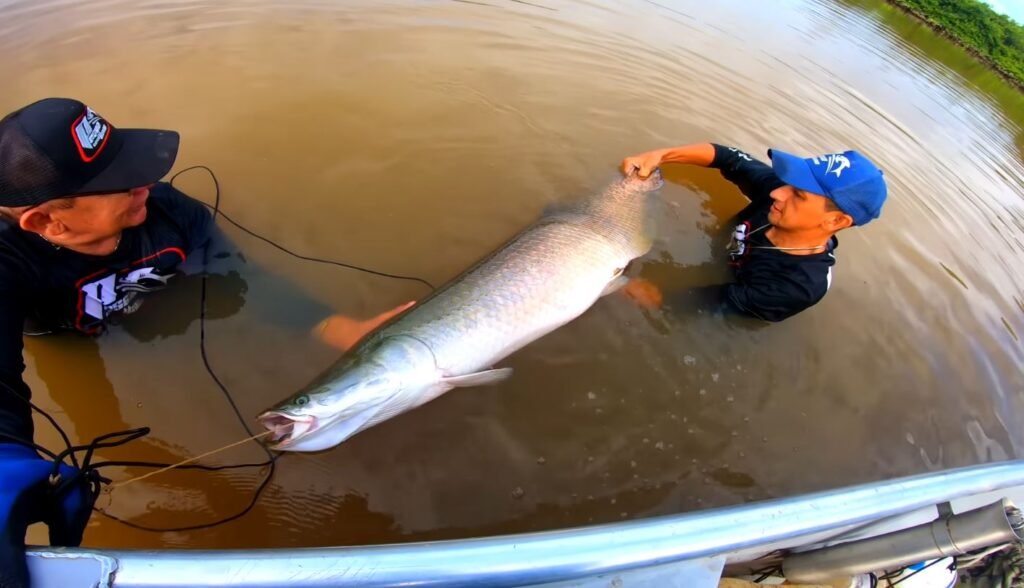
Join us on a journey through Brazil to explore the sport fishing of paiche, the Pirarucu of the Amazon.
The Paiche in Colombia: Guardian of the Colombian Amazon
Colombia boasts rich biodiversity in its Amazon region, and the paiche is one of its iconic species. Although it is less known than in Peru or Brazil, paiche plays an important role in indigenous communities and local economies through fishing.
- ✓ Habitat: Amazon basin, particularly in the Caquetá and Putumayo rivers.
- ✓ Local Importance: Paiche contributes to the food supply of riverside communities and is a species of commercial interest.
- ✓ Conservation: Colombia has implemented fishing regulations to ensure that paiche is not overexploited and to guarantee sustainability.

Join us on a journey through Colombia to explore the sport fishing of paiche, the Guardian of the Colombian Amazon.
The Paiche in Bolivia: A Success of Controlled Introduction
Although paiche is not native to Bolivia, it was introduced to the Bolivian Amazon, primarily in the Beni region. In this area, paiche has thrived and become an important source of income for local communities.
- ✓ Habitat: Rivers and lagoons of the Beni department.
- ✓ Controlled Expansion: The species has been managed to prevent negative impacts on native species.
- ✓ Conservation: Bolivian regulations aim to promote sustainable fishing, ensuring the protection of local biodiversity while managing paiche in a controlled manner.
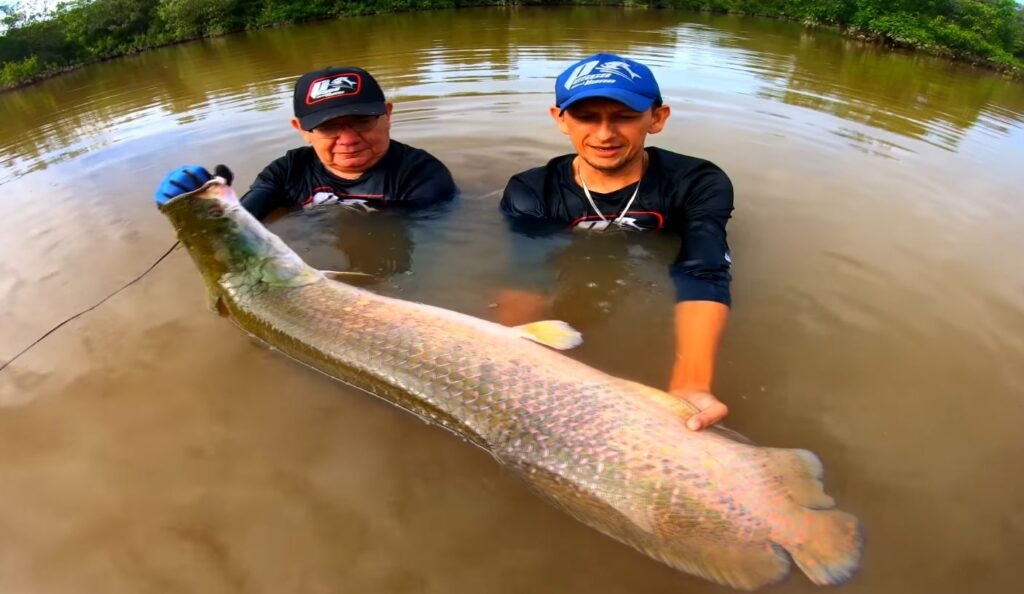
Join us on a journey through Bolivia to explore the sport fishing of paiche, a Success of Controlled Introduction.
The Paiche in Venezuela: A Treasure Introduced to the Orinoco Basin
In Venezuela, paiche is not native, but it has been introduced into some bodies of water in the Orinoco basin. This species has thrived in certain rivers and lagoons in the country, adapting well to local conditions. Its introduction has generated both economic opportunities and ecological concerns due to its potential impact on native species.
- ✓ Habitat: Areas of the Orinoco basin where it has been introduced in a controlled manner.
- ✓ Economic Importance: In certain communities, paiche has started to be utilized for commercial fishing, though on a smaller scale compared to other Amazonian countries.
- ✓ Conservation: As an introduced species, there is control to prevent its uncontrolled proliferation and to protect local biodiversity. Venezuelan authorities monitor its impact on ecosystems.
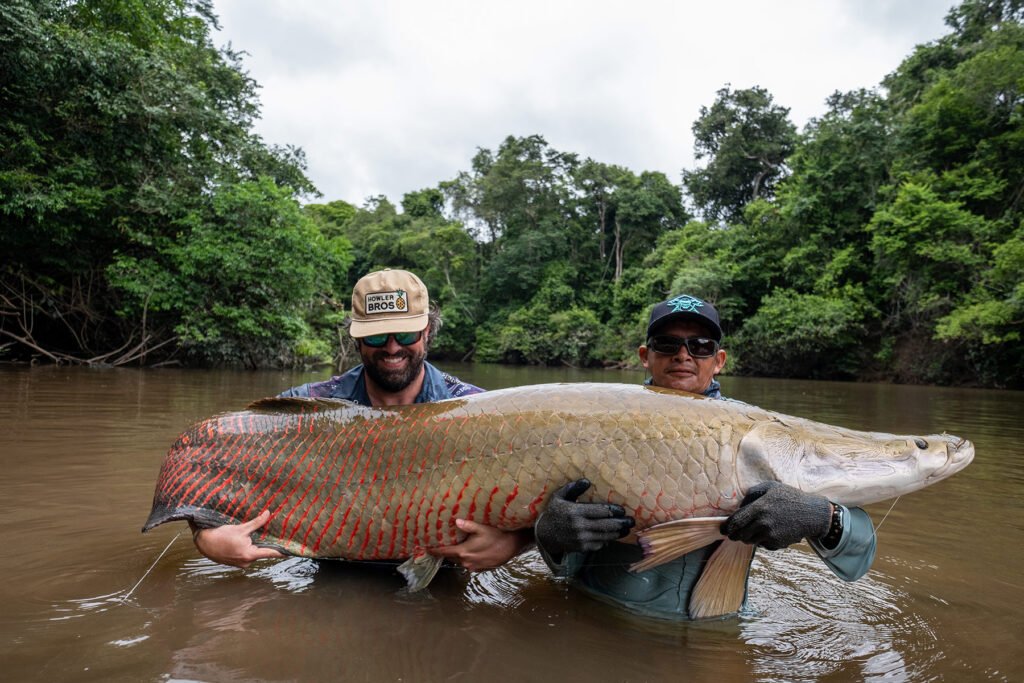
Join us on a journey through Venezuela to explore the sport fishing of paiche, a Treasure Introduced to the Orinoco Basin.
The Paiche in Ecuador: An Inhabitant of the Ecuadorian Amazon
Paiche is present in the Amazon basins of Ecuador, although in smaller numbers than in Peru or Brazil. Its presence in the Sucumbíos region and other Amazon areas has been documented, where it is mainly used by local communities for consumption and trade.
- ✓ Habitat: Ecuadorian Amazon basin, especially in riverside areas of rivers like the Napo.
- ✓ Local Importance: Although not a dominant species, paiche is caught by local fishermen and is beginning to be valued more as a fishing resource.
- ✓ Conservation: Ecuador has adopted regulations to avoid overexploitation of species in its Amazon rivers, and paiche is included in these sustainable management measures to prevent negative impacts on ecosystems.
Join us on a journey through Ecuador to explore the sport fishing of paiche, an Inhabitant of the Ecuadorian Amazon.
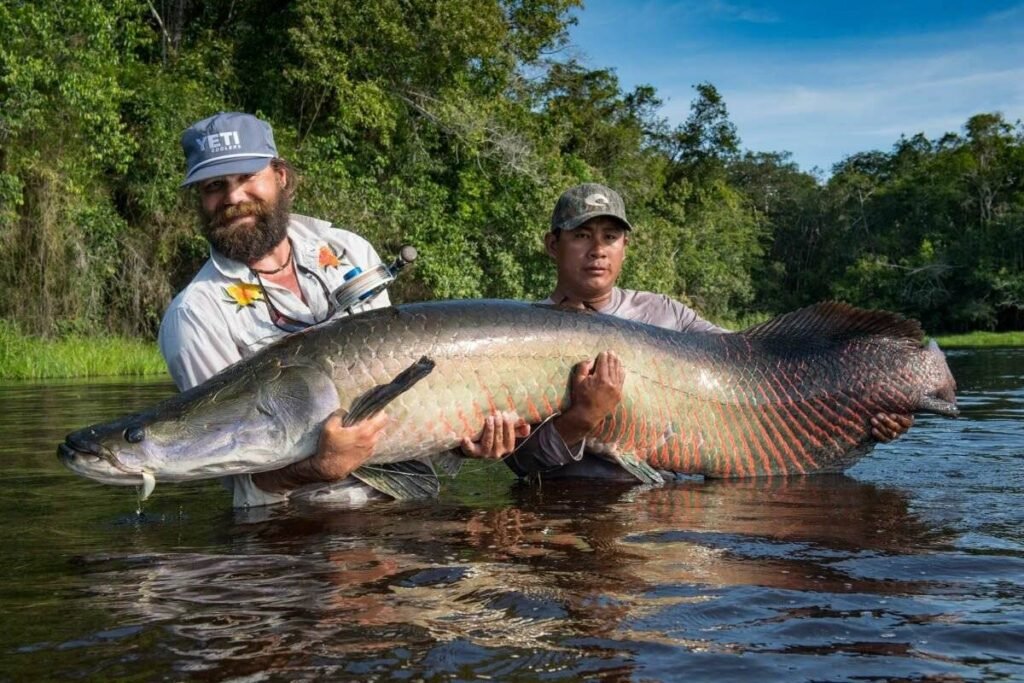
The paiche, also known as pirarucu, is present throughout the Amazon basin in South America, with varying levels of exploitation and conservation depending on the country. Whether in Peru, Brazil, Colombia, Bolivia, Venezuela, or Ecuador, this river giant continues to be a species of great economic and cultural value, but also a challenge in terms of conservation and sustainability. As its popularity increases, the need for responsible management approaches becomes crucial to ensure that the paiche remains a symbol of South America’s rich biodiversity.

